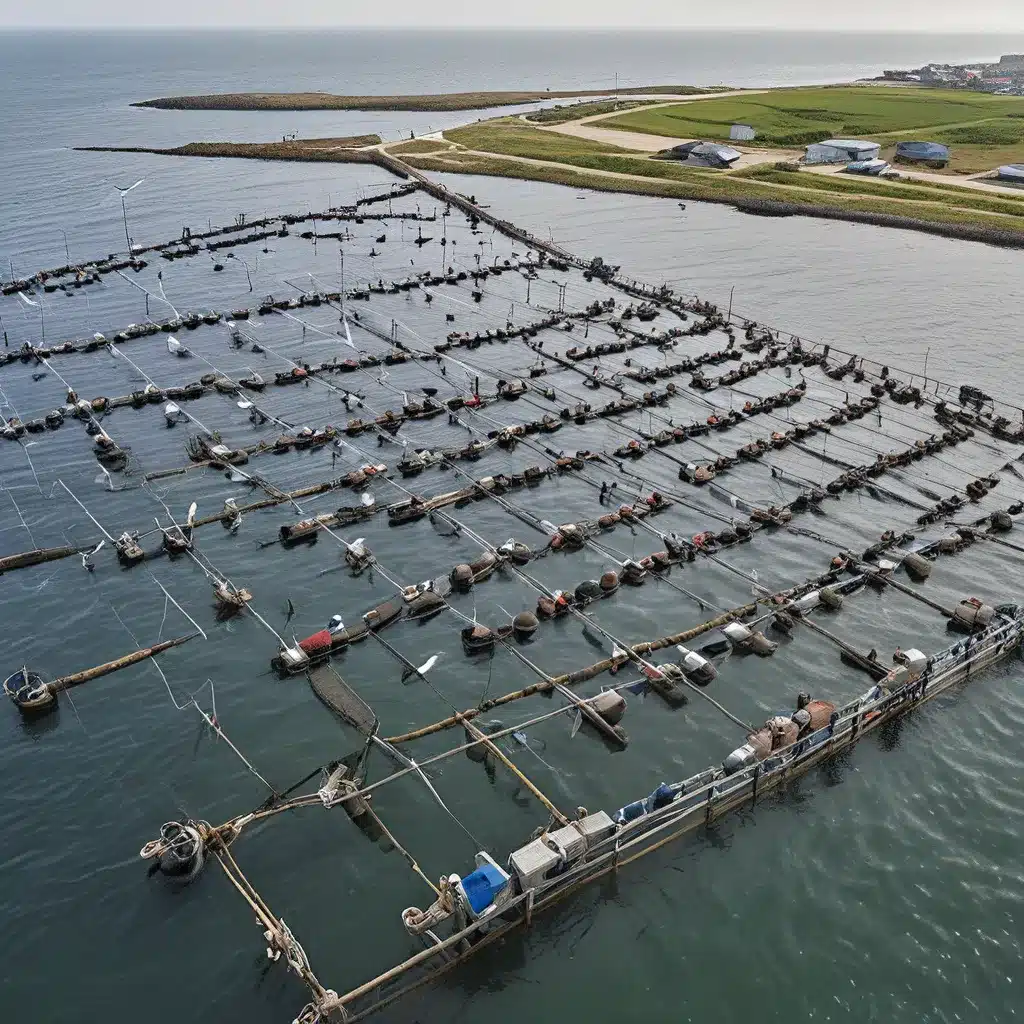
As a passionate advocate for our planet’s wellbeing, I’ve been on a mission to explore the fascinating intersection of renewable energy and sustainable aquaculture. It’s a journey that has opened my eyes to the innovative solutions that are transforming the way we interact with our precious aquatic ecosystems.
The Urgent Need for Sustainable Aquaculture
Let’s face it, the world’s hunger for seafood is insatiable. With the global population soaring and the demand for protein-rich foods skyrocketing, the aquaculture industry has become a vital player in our food production system. However, the traditional approach to aquaculture has often been fraught with unsustainable practices that have taken a toll on the delicate balance of our oceans.
Overfishing, habitat degradation, and water pollution are just a few of the challenges we’ve grappled with. As the stewards of our planet, it’s crucial that we take a hard look at these issues and embrace a more sustainable path forward. And that’s where the power of renewable energy comes into play.
Harnessing the Sun’s Bounty for Aquaculture
One of the most exciting innovations in sustainable aquaculture is the integration of renewable energy technologies. Imagine a world where the very same energy that powers our homes and businesses can also be used to fuel the growth of aquatic organisms in a way that minimizes environmental impact.
Firewinder, for instance, has been at the forefront of this revolution, developing cutting-edge solutions that seamlessly blend renewable energy and aquaculture. By leveraging the abundant power of the sun, their recirculating aquaculture systems (RAS) can significantly reduce water usage and wastewater discharge, creating a more efficient and eco-friendly approach to fish farming.
But it doesn’t stop there. Selective breeding is another area where renewable energy-powered aquaculture is making strides. By carefully selecting and breeding aquatic species with desirable traits, farmers can enhance the overall health of their stock while reducing the need for antibiotics and other chemicals. This not only benefits the environment but also ensures the safety and quality of the seafood we consume.
Fostering a Symbiotic Relationship
Another innovative approach to sustainable aquaculture is the concept of Integrated Multi-Trophic Aquaculture (IMTA). This holistic system combines the cultivation of different aquatic species, creating a symbiotic relationship that mimics the natural ecosystem.
Imagine a fish farm where the waste from one species is utilized as nutrients for another. This closed-loop system not only reduces the environmental impact but also increases resource efficiency, maximizing the productivity of the entire operation. And when you factor in the use of renewable energy to power these IMTA systems, the potential for truly sustainable aquaculture becomes even more compelling.
Overcoming Challenges and Embracing Best Practices
Of course, the journey towards sustainable aquaculture is not without its challenges. Issues like habitat degradation, water pollution, and overfishing remain persistent obstacles that require innovative solutions and a deep understanding of the complex marine environment.
But I’m encouraged by the best practices that are emerging in this field. From precise water quality monitoring to innovative waste management systems, the aquaculture industry is steadily embracing a more responsible and eco-friendly approach.
And the role of renewable energy in this transformation cannot be overstated. By powering these sustainable aquaculture practices, we’re not only nourishing our oceans but also contributing to a cleaner, more resilient future for our planet.
Charting a Course for a Sustainable Future
As I continue to delve into this fascinating intersection of renewable energy and aquaculture, I can’t help but feel a sense of excitement and optimism. The potential for these two powerful forces to work in harmony is truly inspiring.
Imagine a world where our seafood is produced in a way that not only meets our growing demand but also preserves the delicate balance of our marine ecosystems. Where the very energy that sustains our modern lives can also be harnessed to cultivate the bounty of the ocean in a sustainable manner.
It’s a future that’s not just possible, but within our reach. And as we continue to explore the cutting-edge technologies and best practices that are driving this transformation, I believe we’ll uncover even more innovative solutions that will nourish our oceans and secure a brighter, more sustainable tomorrow.
So, let’s dive in and explore the exciting possibilities that lie ahead. Because when it comes to the future of our planet, the oceans hold the key, and renewable energy is the catalyst that can unlock their full potential.

